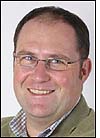The International Air Transport Association (IATA), a trade group composed of airlines around the globe, will soon commence a pilot involving the use RFID to track trolleys that carry food and duty-free items on airplanes. The association calculates that by tagging the trolleys, the industry as a whole could save $470 million a year worldwide.
Based in Montreal, IATA has primarily been known in RFID circles for its role in helping the airline industry track luggage since the 1990s (see Helping Bags Make Their Flights). IATA launched the trolley study in 2004, then two years later assembled a task force comprised of airlines, caterers, regulators, galley-equipment suppliers, aircraft manufacturers and technology vendors, to identify how ID technology could bring about the most benefits.
At the end of 2006, the association wrote a business case explaining how RFID could improve the logistics of in-flight catering and duty-free sales, and now it is winding up tests of various RFID technologies. In August, IATA will begin a trial involving 1,200 tagged trolleys and an as-yet-undisclosed European airline and caterer.
The IATA task force identified several trolley-management problems faced by airlines. Most carriers pay between $600 and $1,000 to purchase a trolley, using up to 50 per flight. Airlines rarely have an overview of where their trolleys are at any given time, and may have to haul them back and forth among aircraft, airports and kitchens to have the proper number of trolleys in the correct place at the right time (see Air Canada GETS Asset Tracking). What’s more, when inventorying the trolleys and the meals within them, airline workers must count them manually.
The task force recognized that proactive maintenance of trolleys could extend their functional life, while effective ID technology could reduce food waste and make it easier for airlines to deliver special meals to passengers and have the right types and amounts of duty-free items available. After examining passive RFID tags—the only kind allowed on a plane—including HF, LF and UHF technologies, IATA determined that UHF passive RFID was the most promising for trolley use.
The trade group envisions many factors contributing to the savings it calculated for the industry. By tracking trolleys and their contents at many different points, airlines would lose fewer trolleys; maintain them better; shuttle them less frequently among kitchens, aircraft and airports; and waste fewer meals. According to Andrew Price, IATA’s project manager for RFID, the potential RFID solution would include a permanent passive RFID tag on each trolley and each stowage unit, with a disposable tag on each meal tray and on bar and duty-free items.“We’re interested in the efficiency of airline operations, reducing costs and improving customer service,” Price says. “We think we can do that with RFID.” Once it decided on the technology, IATA began testing RFID tags and readers to see how it could get around the fact that trolleys are made of metal—which interferes with tag reads—and used in the metallic aircraft environment.
The task force tested passive tags from QinetiQ, Avery Dennison, Intermec and Texas Instruments, Price notes, but has not yet decided on a particular vendor. He adds that IATA identified several tags able to function despite the presence of metal, such as tags encapsulated in plastic or embedded in adhesive paper labels.
As part of the tests, IATA attached passive tags to the trolleys and tested read distances, orientation and rates as they moved at different speeds and with various antenna configurations. The airline and caterer trial will involve the installation of readers at the entrances and exits of catering facilities, as well as using handheld readers at a number of other locations.
“Whenever you do an RFID project, people get hung up on tags and readers, and they don’t actually look at whether it really makes sense,” Price says. “We had to look at the technology first to find out what it costs. Now that we’ve done that, we’re into the business process.”
IATA plans to publish the results of its technical tests at the end of this month, and is currently working out a recommendation for airlines regarding where to place the tags on equipment. All official IATA recommendations have to be approved by member airlines, and the approvals process will continue until 2008. Price says the organization is likely to recommend UHF tags conforming to the ISO 18000-6c standard.
Although EPCglobal standards are incorporated into the ISO standard, Price says IATA did not choose the EPC standard because it has a “fundamental” problem with EPCglobal because of that organization’s policy of charging for membership.


